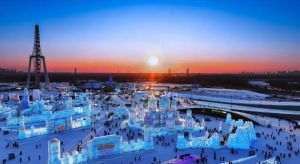The rehabilitation of the railway infrastructure is far from the schedule promised by Sorin Grindeanu, the Minister of Transport and Infrastructure, says the Pro Infrastructure Association in a post on the official Facebook page. Thus, if at the beginning of last year the reception on December 31, 2023 of 100 kilometers of railway, which was to run at a maximum speed of 160 kilometers per hour, was scheduled, that objective was not achieved, because the CFR did not receive last year not even one kilometer from what was originally planned, says the Pro Infrastructure Association, so the program was moved to 2024, the year in which Minister Sorin Grindeanu promises another 200 kilometers of railway.
The quoted post states: "Romania remains with only 570 kilometers of reconstructed railway, of which about 470 kilometers allow traffic at 140-160 km/h, and the lowest speeds on the rehabilitated lines are 80-90 km/h on 48 kilometers between Comarnic and Predeal. On the main corridor (Constanţa-Curtici, 850 kilometers) lots of 253 kilometers are still under reconstruction. Of these, four have passed 6 years of age and the "youngest", signed in 2020, have reached... 20-25% physical state. So instead of a final sprint in 2023 we had an ordinary year on the railway sites, i.e. a snail's pace. From the percentage stages published by the CFR in November 2022 and November 2023, it appears about 1% average monthly advance for projects that are going "well" and less than 0.5% per month for those that are going worse. (...) the maximum railway percentage of 1% monthly means a minimum of 100 months of execution, compared to the 36 for which the contract is signed, i.e. 64 months late. It's nothing new at CFR: out of 5 completed sections between Sighisoara and Simeria (2011-2020), the delays measured between 46 and 78 months, i.e. between 4 and 6 and a half years".
Those from Asociaţia Pro Infrastructura state that "the only large construction site of the CFR that went decently has... only 9 months delay and over 3% monthly progress: the reopening of Bucharest-Giurgiu by rebuilding the Grădiştea bridge". On this section, "traffic has been closed for many years and the 12 km straight line contract is of the design and execution type, so the contractor Porr had no reason either to complain about being confused by the trains, or to ask for redesign time, as is happening on the 6 large batches currently in execution and how it happened on the other 5 before them", the quoted source says.
The Pro Infrastructura Association mentions that there are also big problems with rolling stock: "out of the dozens of InterRegio and Regio trains that the European Union has committed to pay us for the 2014-2020 POIM, only one train has arrived in the country, and not even that one it could be received on time, being currently in tests!".
Under these conditions, the members of the Association doubt that in 2024 the minister Sorin Grindeanu will be able to boast of putting into use 300 kilometers of railway on which it will be possible to travel at a maximum of 160 kilometers per hour. Especially since there are also big problems in the construction of new electrified lines, in light of the 9 kilometers received last year instead of the 30 kilometers as scheduled.






























































